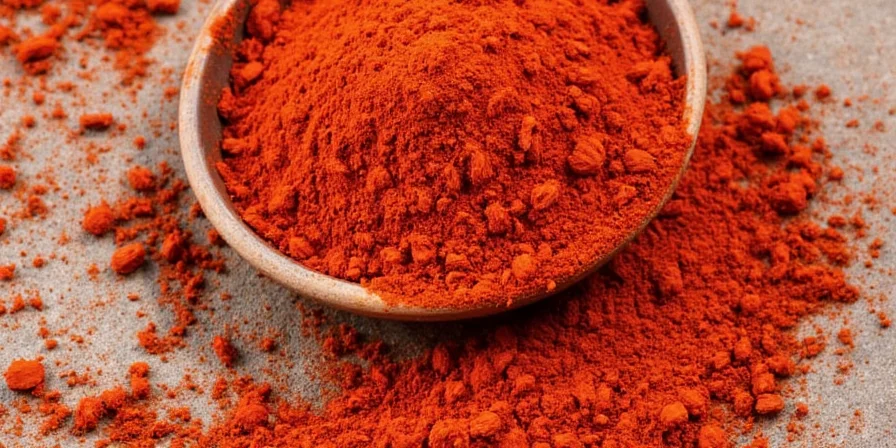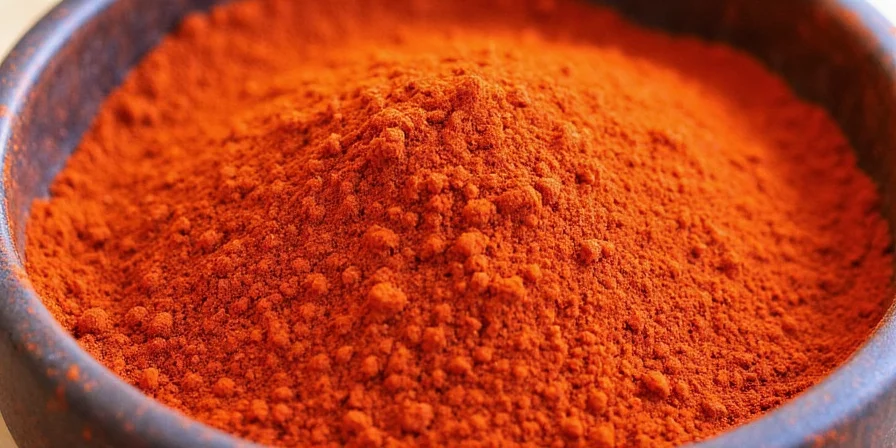Chilli powder is a spice blend made from ground dried chili peppers, typically mixed with complementary spices like cumin, garlic powder, and oregano. Unlike pure cayenne pepper, authentic chilli powder contains multiple chili varieties and additional spices to create balanced flavor. Most commercial blends range from 2,000-3,000 Scoville heat units, making them milder than pure cayenne (30,000-50,000 units). The best chilli powder for cooking depends on your recipe—ancho-based blends work well in slow-cooked dishes, while cayenne-heavy versions add quick heat to sauces.

What Is Chilli Powder and How Is It Different From Similar Spices?
Chilli powder (often spelled "chili" in American English) refers to a specific spice blend, not just ground dried peppers. Authentic blends combine multiple chili varieties with complementary spices to create balanced flavor profiles. Mexican-style chilli powder typically contains ancho and guajillo peppers with 5-8% cumin, while American versions often include garlic powder and oregano.
Key differences to understand:
- Chilli powder vs chili powder: Same product, different regional spelling ("chilli" common in UK/Australia, "chili" in US)
- Chilli powder vs cayenne: Chilli powder is a blend (2,000-3,000 Scoville units), cayenne is pure ground peppers (30,000-50,000 units)
- Chilli powder vs paprika: Paprika comes only from sweet peppers (500-1,000 units), chilli powder contains hotter varieties

Why Chilli Powder Matters in Cooking: Practical Benefits
Chilli powder delivers consistent flavor and heat that fresh peppers can't match. Unlike fresh chilies whose heat varies by growing conditions, quality chilli powder provides reliable spiciness batch after batch. The drying process concentrates flavor compounds while creating new ones through enzymatic reactions.
Three practical advantages for home cooks:
- Consistent results: Standardized heat levels mean you can reliably recreate recipes
- Flavor complexity: Blends create layered taste profiles single peppers can't achieve
- Convenience: Available year-round regardless of fresh pepper seasons

Types of Chilli Powders: Choosing What's Right for Your Recipe
Understanding regional variations helps you select the perfect blend. The heat level (measured in Scoville units) matters less than flavor compatibility with your dish.
| Type | Heat Level | Flavor Profile | Best For |
|---|---|---|---|
| Mexican Chilli Powder | Mild (1,000-2,000) | Earthy, smoky, complex | Tacos, enchiladas, mole |
| Regular Grocery Store | Mild-Medium (2,000-3,000) | Balanced heat, herbal notes | Chili, stews, marinades |
| Cayenne-Based | Hot (30,000-50,000) | Sharp, immediate heat | Hot sauces, Cajun dishes |
| Kashmiri | Mild (1,000-2,000) | Vibrant red, subtle heat | Butter chicken, color-sensitive dishes |
| Homemade Blend | Customizable | Tailored to preference | All-purpose cooking |

How to Use Chilli Powder Effectively: Pro Tips for Home Cooks
Avoid common mistakes with these practical techniques:
- Bloom in oil: Heat 1 tsp chilli powder in 1 tbsp oil for 30 seconds before adding to dishes for maximum flavor release
- Add at right time: For soups/stews, add half at beginning, half near end for layered heat
- Measure properly: Spoon powder into measuring spoon and level off — don't scoop directly from container
- Adjust heat: Too spicy? Add acid (1 tsp vinegar per tsp chilli powder) or dairy alternatives like coconut milk
Quick substitution guide:
- 1 tsp chilli powder = 1/2 tsp paprika + 1/4 tsp cumin + pinch cayenne
- 1 tsp chilli powder = 1 tbsp finely minced fresh red bell pepper + 1/4 tsp cayenne
- For mild version: 1 tsp paprika + 1/4 tsp garlic powder

5 Common Chilli Powder Mistakes (And How to Fix Them)
These easily avoidable errors ruin dishes more often than you think:
- Adding to boiling liquids: Causes bitterness — always add to warm oil first or near end of cooking
- Using expired product: Loses potency after 6-12 months — check aroma (should be strong and earthy)
- Overcompensating with dairy: Dairy only masks heat temporarily — acid neutralizes capsaicin more effectively
- Storing in clear containers: Light degrades color and flavor — use opaque or dark glass containers
- Measuring by volume: Compaction changes amounts — for precision recipes, use kitchen scale (1 tsp = 2.5g)

How to Store Chilli Powder for Maximum Freshness
Proper storage preserves flavor for 12-18 months. Follow these science-backed methods:
- Keep in airtight container away from light (dark glass or opaque containers)
- Store in cool pantry (below 70°F/21°C), not next to stove or oven
- Never refrigerate — temperature changes cause condensation and moisture
- Buy whole dried peppers and grind as needed for longest freshness
- Freeze in portion-sized bags for long-term storage (up to 2 years)
Signs your chilli powder has gone bad:
- Faded color (should be vibrant red)
- Weak or musty aroma
- Clumping from moisture exposure
- Bitter taste instead of earthy warmth

Chilli Powder Heat Guide: Understanding Scoville Ratings
Heat perception varies by person, but this practical guide helps you choose the right blend:
- Mild (500-2,000 SHU): Kashmiri, ancho-based — safe for kids, adds color without overwhelming heat
- Medium (2,000-5,000 SHU): Standard grocery store blends — noticeable warmth without burning
- Hot (5,000-15,000 SHU): Chipotle or cayenne-heavy blends — for those who enjoy significant heat
- Extra Hot (15,000+ SHU): Specialty blends — use sparingly for intense heat
Pro tip: If you miscalculate heat, add acid (1 tsp vinegar per tsp chilli powder) rather than dairy for more effective heat reduction.

Practical Chilli Powder Facts Every Cook Should Know
- Chilli powder enhances other flavors through trigeminal nerve stimulation — you can reduce salt by 20% when using it
- The optimal cooking temperature for chilli powder is 160-180°F (71-82°C) — higher temperatures create bitterness
- Chilli powder was originally developed as a preservative before refrigeration, extending food safety by 3-5 days
- Vitamin C content helps your body absorb iron from plant-based foods when used in cooking

Regional Chilli Powder Traditions: What Home Cooks Can Learn
Understanding regional approaches helps you use chilli powder more effectively:
- Mexico: Oaxacan cooks toast ancho and mulato peppers before grinding for deeper flavor in mole sauces
- Hungary: Authentic paprika production uses specific soil treatments to enhance color intensity
- India: Kashmiri chilli powder is often blended with turmeric at precise moisture levels to maintain vibrant color
- USA: Southwestern blends typically include garlic and onion powder for immediate flavor impact
Takeaway for home cooks: Match your chilli powder to the dish's cultural origin when possible for authentic results.

Chilli Powder Questions Home Cooks Ask Most
What's the difference between chilli powder and chili powder?
There's no difference — it's simply regional spelling. "Chilli" is common in UK, Australia and some Commonwealth countries, while "chili" is standard in the US. Both refer to the same spice blend of ground dried peppers and complementary spices.
Can I substitute paprika for chilli powder?
Yes, but with adjustments. Regular paprika is milder, so use 1 tsp paprika + 1/4 tsp cumin + pinch cayenne to replace 1 tsp chilli powder. For Hungarian dishes, use sweet paprika alone. For Indian recipes, add turmeric (1/8 tsp per tsp paprika).
Why does my chilli powder taste bitter?
Bitterness happens when chilli powder is exposed to high heat (above 350°F/175°C). Always add it to warm oil, not smoking hot pans. Expired powder (over 12 months old) also develops bitterness as flavor compounds degrade. Properly stored, chilli powder maintains optimal flavor for 6-12 months.
How do I reduce heat if I've added too much chilli powder?
Acid works better than dairy: add 1-2 tsp vinegar or lemon juice per tsp of chilli powder. Sugar (1 tsp per tsp chilli powder) also helps by binding to heat receptors. For immediate relief, eat bread or rice — starches absorb capsaicin better than dairy. Never add more chilli powder to "balance" the heat — this makes it worse.
What's the best chilli powder for beginners?
Start with a standard grocery store blend (like McCormick or Badia) which offers balanced heat (2,000-3,000 Scoville units). Mexican-style blends (like Spice Islands) work well for most recipes. Avoid cayenne-heavy blends until you understand your heat tolerance. For mild cooking, try Kashmiri chilli powder which provides vibrant color with minimal heat.











 浙公网安备
33010002000092号
浙公网安备
33010002000092号 浙B2-20120091-4
浙B2-20120091-4